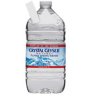Oxidation
Tastes/Smells Like:
Stale or old, wet cardboard, sherry, papery, pineapple, decaying vegetables, Increased bitterness, harshness
Possible Causes:
Oxidation occurs when oxygen negatively reacts with the molecules in the wort or beer. An excessive level of oxygen being introduced to the beer, especially while wort is still warm or after fermentation is complete, can create cardboard of sherry-like flavors. Too much headspace in bottles can lead to oxidation as well. On the other hand, aeration of wort before pitching yeast is necessary for yeast and good fermentation.
How to Avoid:
Oxidation is almost always a result of unnecessary splashing of fermented beer. When transferring beer from one vessel to the next, prevent splashing by transferring beer with tubing rather than pouring straight in. Keep the end of the transfer tubing beneath the liquid line and avoid getting air pockets in the transfer tubing. Also, keep exposure of wort to outside air at a minimum. Hot side aeration refers to wort becoming oxidized while it is hot. Warm liquid is more inclined to absorb oxygen and therefore, it is recommended that when wort is over 80ºF, splashing be avoided. During and directly after the boil splashing is not much of a concern, as oxygen can’t really dissolve into liquid that hot. Cool wort as quickly as possible and do not aerate wort until it is under 80ºF. When bottling, only leave about ½” of headspace. The use of “oxygen absorbing” bottle caps may help keep oxygen out of the bottle. When kegging, purge kegs with Co2 to flush oxygen out of the headspace.



























































![Craft A Brew - Safale BE-256 Yeast - Fermentis - Belgian Ale Dry Yeast - For Belgian & Strong Ales - Ingredients for Home Brewing - Beer Making Supplies - [3 Pack]](https://m.media-amazon.com/images/I/51bcKEwQmWL._SL500_.jpg)

